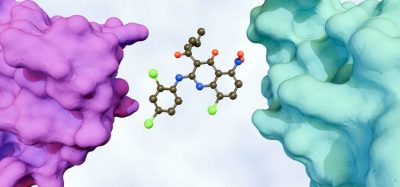ICH M13: Bioequivalence guidelines
Dave Elder outlines how bioequivalence data supports numerous processes at various stages of drug development as well as when establishing generic drug substitution, and reflects on its differing interpretations across the globe.
WITH GLOBAL healthcare costs spiralling, many countries and pan-national organisations, eg, the Association of South East Asian Nations (ASEAN), the World Health Organization (WHO) and the European Union (EU), are keen to encourage generic drug substitution to allow easier access to critical medicines.1,2 Bioequivalence (BE) establishes therapeutic equivalence between the innovator and generic products based on the equivalence of the “rate and extent of absorption” as defined using maximum plasma concentration (Cmax) and Area under the curve (AUC), respectively. The application of bioequivalence is also important in the following areas:3
- Supporting early-stage regulatory change-control, ie, changing the product type during early clinical development
- Supporting the use of blinding strategies in pivotal clinical studies, eg, the use of over-encapsulated comparator products
- Supporting bridging between the product used in pivotal Phase III clinical studies and the ‘to be marketed’ commercial product
- Supporting Product Line Extensions (PLEs), eg, oral liquids, for different clinical populations, eg, age‑appropriate formulations for paediatric or geriatric populations
- Supporting various post-approval Chemistry, Manufacturing and Control (CMC) change-controls.
Although guidance for BE exists in the majority of countries and international health organisations, there are some significant differences that constrain global drug development.1,2 Some of the differences relate to whether the generic drug products are “pharmaceutical equivalents”, ie, identical amounts of the same drug substance in the same dosage form via the same route of administration, or “pharmaceutical alternatives”, ie, equivalent amounts of the same drug (but not necessarily the same drug substance, eg, different salts) in similar dosage form (capsules or tablets) via the same route of administration.4 Different territories have different interpretations of what constitutes a suitable batch size for use in BE studies; eg, the European Medicines Agency (EMA), the US Food and Drug Administration (FDA), and WHO state, “a minimum of 10 percent of the commercial batch size or 100,000 units, whichever is greater”, whereas China stipulates, “a scaled up batch or a full production batch” and ASEAN and Brazil don’t specify at all.4 All countries require the use of healthy subjects, unless safety considerations require patient use. Japan stipulates the use of achlorohydric (higher gastric acidity, ie, pH 3-4) subjects for some medicinal products, as this condition is quite common in Japan. Most countries specify fasted dosing for Instant Release (IR) products; however, some will require fed-state dosing if the label specifies, “take with food” or where there is a known food interaction. In contrast, Modified Release (MR) products should be conducted in the fed and fasted state.4 However, the majority of the BE differences relate to study design, data analysis and Pharmacokinetics (PK) variability.1,2
The new ICH (International Council for Harmonization) M13 initiative will look to harmonise BE requirements with the objective of decreasing costs, enhancing access to patients and avoiding unnecessary exposure of healthy human volunteers to medicinal products. It is envisaged that ICH M13 will be sub‑divided into three separate, but related, guidance documents, ie, ICH M13A, M13B and M13C.1,2
ICH M13A is expected to address study design and data analysis; the latter covering statistical methodology, BE criteria, long half-life drugs and using partial AUC methods. ICH M13B will include biowaiver considerations for additional strengths (linked with ICH M9),5 narrow therapeutic index drugs, as well as advanced BE study design and supporting data analysis. The acceptance of comparators across different regions has, at this time, been specifically exempted. Timings have been impacted by the COVID-19 pandemic, but the aspirational goals are technical consensus (step 2A/2B) by middle of 2022 and adoption (step 4) by end of 2023.1,2
About the author
David Elder has nearly 40 years of service within the pharmaceutical industry at Sterling, Syntext and GlaxoSmithKline. He is now an independent GMC consultant. He is a visiting professor at King’s College, London and is a member of the British Pharmacopoeia. He is a member of the Joint Pharmaceutical Analysis Group (JPAG) and the Analytical Division Council of the Royal Society of Chemistry.
References
- Final Concept Paper M13: Bioequivalence for Immediate-Release Solid Oral Dosage Forms. Dated 19 June 2020. Endorsed by the Management Committee on 10 July 2020.
- Final Business Plan M13: Bioequivalence for Immediate-Release Solid Oral Dosage Forms. Dated 19 June 2020. Endorsed by the Management Committee on 10 July 2020.
- Elder DP. Biowaivers. In: Solubility in Pharmaceutical Chemistry, Editors: Saal C, Nair A. de Gruyter, pp. 319-352.
- Davit B, Braddy AC, Conner DP, Yu LX. International Guidelines for Bioequivalence of Systemically Available Orally Administered Generic Drug Products: A Survey of Similarities and Differences. AAPS J. 2013 Oct; 15(4): 974–990.
- ICH M9. Biopharmaceutics Classification System-Based Biowaivers. Final version Adopted on 20 November 2019.









